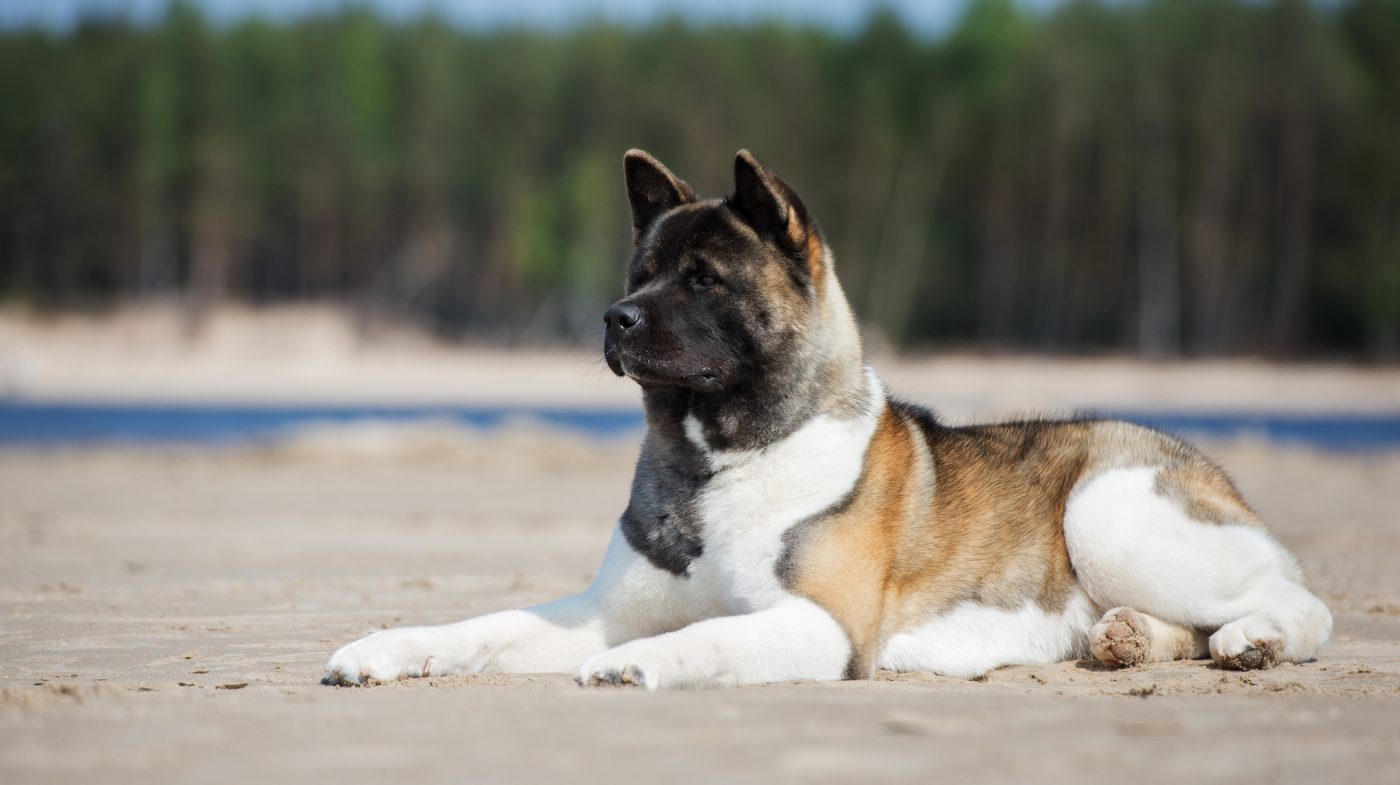Akitas are strong, striking dogs who, centuries ago, hunted formidable prey like boar and bears. Today, they remain beloved companions known for their loyalty and intelligence. Putting those traits together, you’re likely to find that yours feels a strong drive to protect your family.
Akitas first came to America in the 1930s, with a celebrity endorsement from Helen Keller. They are renowned for their handsome appearance and regal bearing, though their admirers will also concede that they can be strong-willed and a challenge for novice dog owners. For those considering bringing an Akita into their household, or for existing owners looking to better care for their pups, here’s a guide to understanding and caring for these strong, tenderhearted dogs.
Basic Akita facts
Starting life as cute puppies that resemble stuffed animals, Akitas grow into imposing, athletic adults of up to 28 inches high at the shoulder and weighing up to 130 pounds. These details all apply to the American version of the breed, which is larger than the Japanese Akita inu and has some other differences as well. The Akita’s puffy double coat is a distinguishing feature, and you can expect the dogs to shed quite a bit twice a year when they “blow” their coats. Akitas’ fur comes in a wide array of colors, and in brindle (a streaked pattern) or pinto (white with large patches of other colors). The Akita’s head features erect, triangular but slightly rounded ears and small, dark eyes that look ever vigilant; their tail is large, fluffy, and often curled against the body. Having originated in a cold, mountainous region, Akitas are equipped to deal with winter weather: their webbed toes work like built-in snowshoes, and they can use their dew claws to help hoist themselves out of icy water.
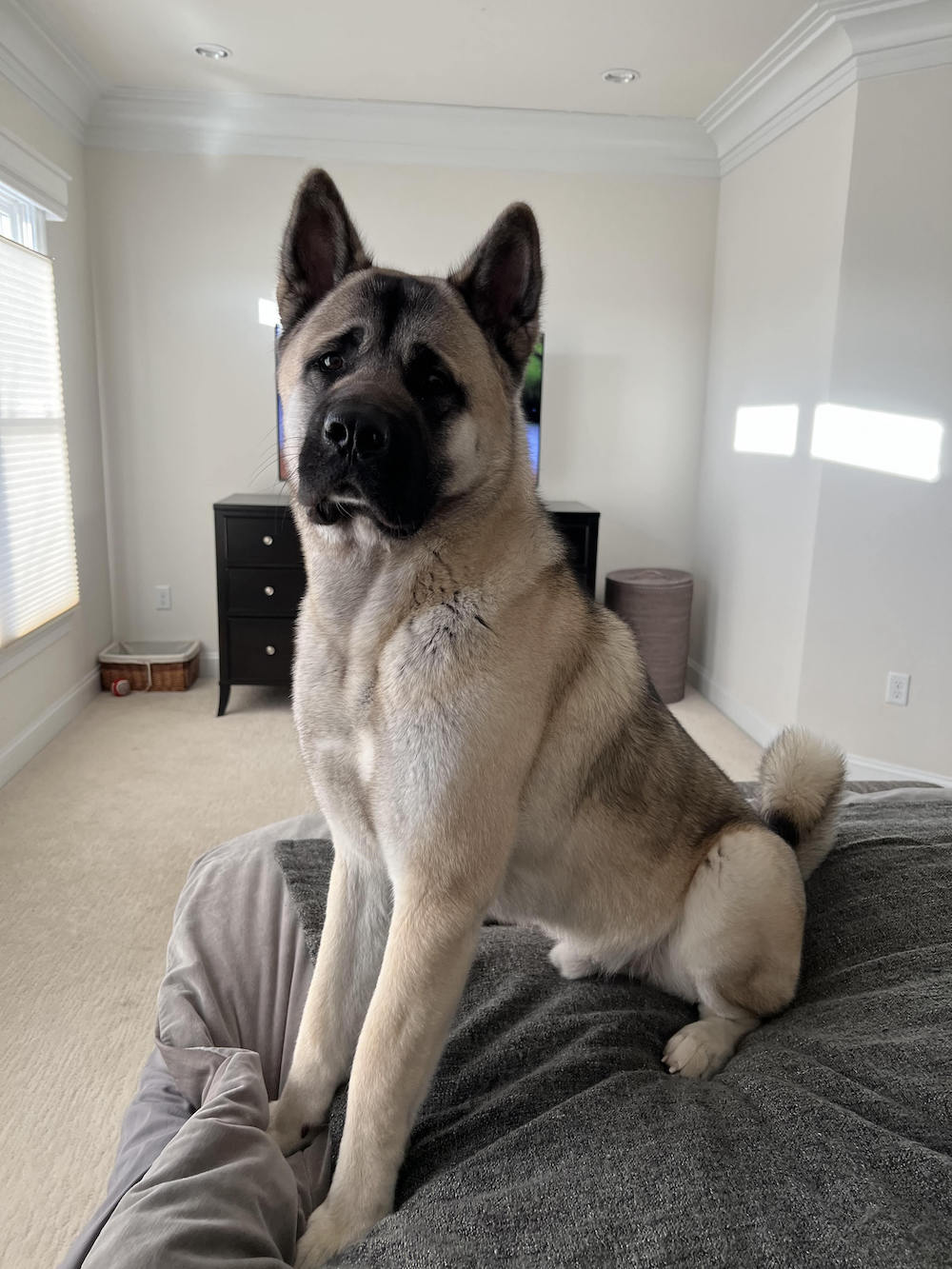
Koji
Akita personality
Akitas are known for being aloof with strangers, so it’s not surprising to hear some of their humans compare them to kitties. Deborah Mullis says that Okami, her Akita–border collie mix, “has always been aloof like a cat.” Nevertheless, Mullis continues, “she is very sweet.” Though Akitas may not roll over for strangers, and aren’t stereotypically known to go around begging for affection, they often bond strongly to family. “She would never come to you for attention,” Mullis says, “but if you go to her, she likes to be loved on and petted.”
The cat comparisons continue courtesy of Kathy DeWees, Vice President and Director of Akita Rescue of Western New York. “Think of them as a cat in a dog body,” she says. “They please themselves first, and if you get pleased along the way that’s an added bonus.” This is not to say Akitas aren’t up for family fun; they just want it on their terms. “They have a wonderful sense of humor,” DeWees says, referencing the dogs’ mischievous side, “but they don’t show that to everybody.”
“Koji is very people-friendly, and loves to lick and mouth your hands when playing,” says Duane Hart of his Akita companion. “He’s also big on lying on his back and getting you to rub his belly and tickle him.” But most Akitas are unlikely to engage with a stranger, and would prefer to initiate human contact when it happens. The breed was developed to hunt and guard, and the resulting instincts can lead them to be standoffish–and, sometimes, without training, even aggressive, especially toward other dogs. “It is really important for new owners to respect the power and instincts of an Akita,” Hart says. “We would emphasize using extreme caution whenever you introduce your Akita to another dog.” Ditto for other animals and people.
Lisa Jukes, founder of Akita Rescue of Northwestern Pennsylvania, has owned three Akitas and acknowledges the breed’s stubborn, loyal, fearless reputation. Still, she notes, “They’re all so different. And people are all so different.” One of Jukes’ three Akitas was typically aloof while another one was a friendly neighborhood presence. All in all, this is something to keep in mind with every pup you meet—all dogs are individuals, and breed is no guarantee of personality. While there may be certain trends among Akitas, you should be ready to love and care for the dog you have, who may not conform to your expectations.
A large and powerful dog like an Akita should not be brought home without considerable research. “By all means talk to somebody,” says DeWees, who warns against simply falling for Akita puppies’ extreme cuteness. Meet adult Akitas and speak with their owners, observe the breed at dog parks, attend a rescue event, and connect with local rescues and breed clubs. “Nobody should own any pet before they do their research,” she adds. “We spend a lot of time talking people out of the breed.”
In general, Akitas do better in homes with room to play, and without children and other pets. It helps if you’re home a lot. That said, there are always exceptions. DeWees has successfully placed Akitas with single people and families with several children, and in rural residences with huge yards and a condo in central Philly. “It depends on the willingness of the family to learn and work with the dog,” she says. Some Akitas even work as therapy dogs with children. Always supervise interactions between children and dogs, and know that you’ll have a better chance of your dog enjoying kids’ presence if they meet the youngsters when they’re still a puppy.
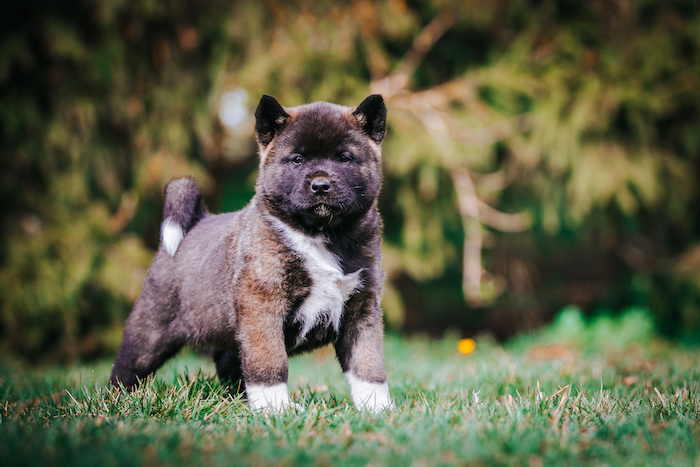
Akita breed history
The Akita family tree extends more than a thousand years into the past, and shares roots with other spitz dogs like huskies, chow chows, and malamutes. Fellow Japanese spitzes include the Hokkaido, Kai Ken, and shiba inu. “Inu” means “dog,” and the Japanese version of the breed is called the Akita inu. The American breed goes by just “Akita.” “Akita” means “autumn rice paddy,” and the dog’s namesake area is indeed rich with rice farms. The Akita region is wooded, mountainous, and cold as heck in the winter, so residents wanted an athletic, resilient dog. In order to chase and hold bears and boars, the dog also had to be smart and fearless.
Akitas have long been associated with nobility—the American Kennel Club says that, for a time, only the imperial family and their court were allowed to keep them. Many legends and stories of the breed refer to them living with samurai.
In 1927, devotees of the dog established the Akitainu Hozokai “preservation society,” or breed club. Four years later, Japan would designate the Akita a “national monument.”
Helen Keller fell in love with Akitas on a trip to Japan in 1937, and was the first to bring the breed to the United States. She received one named Kamikaze-Go as a gift, and returned home with him. Keller referred to him as her “angel in fur,” and after his death the Japanese government sent her his younger brother, Kenzan-Go. World War II threatened the breed’s survival, and only a handful of the dogs were alive in Japan at the end of the conflict. When the fighting stopped, breeders worked to restore Akita populations. Today, Akitas are common in Japan and the United States; the AKC ranks them as the 52nd most popular among its 192 recognized breeds.
The most famous Akita, and a prime reason the breed is so beloved in Japan, was Hachikō—a white Akita adopted in 1924 by Hidesaburo Ueno, a professor of agricultural science at Tokyo Imperial University. Every evening without fail, Hachikō would wait at one of Tokyo’s main subway stations for Ueno to return from work. Then the two would walk home together. In 1925, Ueno died unexpectedly at work, and Hachikō waited in vain at the station for his master. The Akita returned on subsequent evenings intending to meet Ueno, and he would continue his daily trek to the station for the next decade. This story—and associated statues, images, exhibits, place names, souvenirs, and movies—have helped cement Hachikō and his breed in the collective consciousness of his country. It was this devotion that piqued Helen Keller’s interest in the breed. It also inspired the 2010 film Hachi: A Dog’s Tale, which starred Richard Gere.
No other Akita can touch Hachikō’s fame, especially in Japan, but other members of the breed have found or brushed with celebrity. Drake owns an Akita named Diamond, who appears with the rapper (and a mansion and Rolls-Royce) on the cover of his 2016 album, Views. Other prominent Akita people have included Dan Aykroyd, Henry Cavill, and Sarah Michelle Geller.
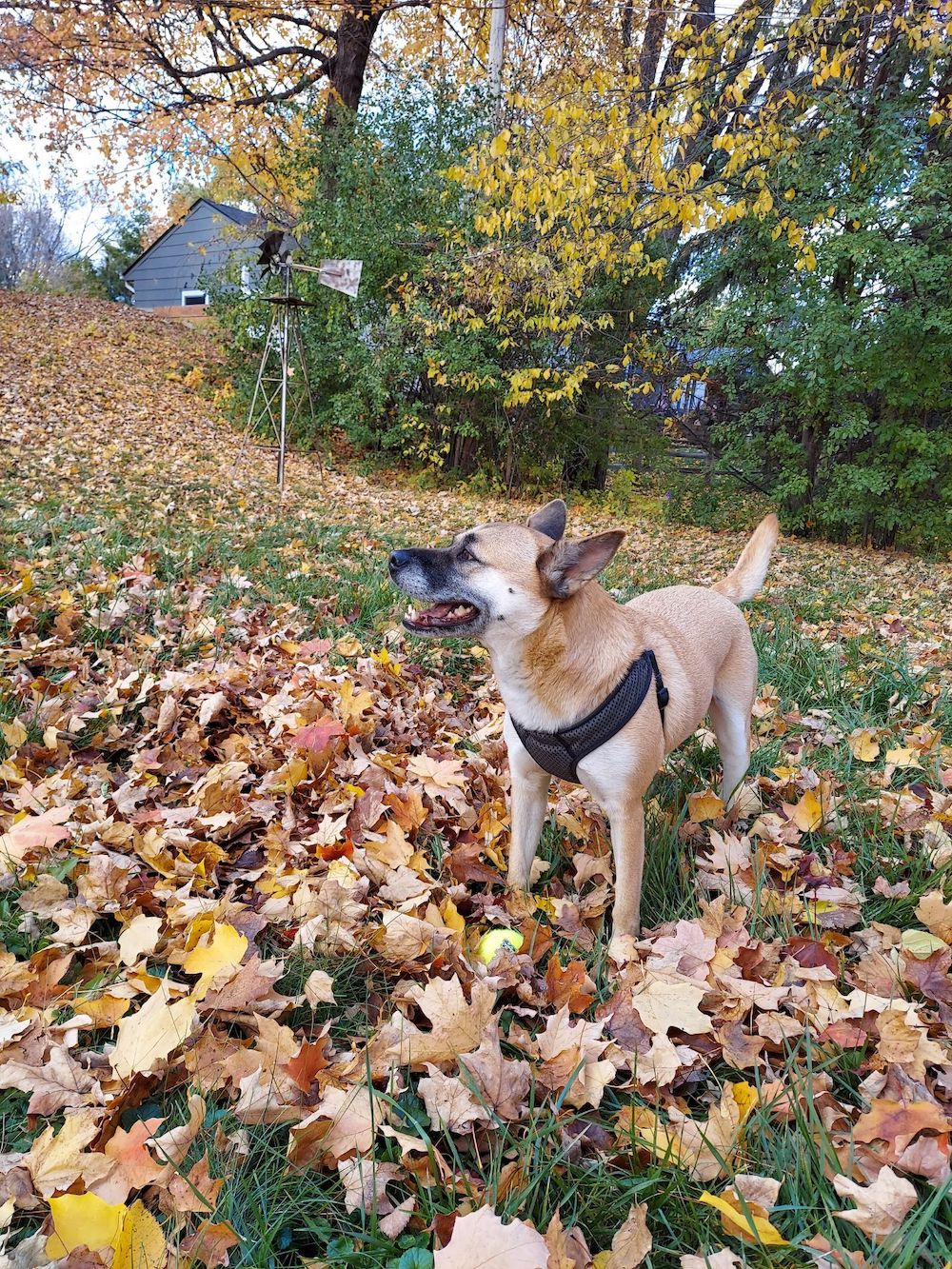
Kacey, an Akita mix
Akita training
Akita-philes may debate the dog’s personality traits and what type of person makes a good owner, but all agree on one thing: Training is mandatory. Akitas are intelligent dogs that respond well to training, and can become unhappy and destructive without it.
Akitas’ independent thinking can make training a challenge, so proceed with patience and consistency. Also, always keep your Akita on leash during walks–you can’t be sure they’ll stick by you or come when called if something exciting catches their attention.
“No Akita should run your household,” says DeWees. “Everything has to be on your terms.” That is not to say that training must be heavy-handed and onerous, only that a lack of structure will make life worse for dog and human alike. Akitas bore quickly and respond better to brief, fun training sessions. “You’re not going to spend repetitive hours training with an Akita,” DeWees says. Even ten minutes of quality training a day can achieve results.
Because Akitas have guarding instincts and are big, strong dogs, socialization should start early in their lives. Akitas have to learn not to regard every new person and animal as a threat. They don’t tend to be naturally open to strangers, and can often be aggressive toward other dogs. Always supervise them around other dogs and children.
Left unchecked, the breed’s aloofness can turn into aggressive distrust, and their tendency toward boredom can negatively impact home furnishings and footwear. “They’re intelligent enough to sense danger without reacting—if there’s not a need to react,” DeWees says. Training will reinforce their better instincts.
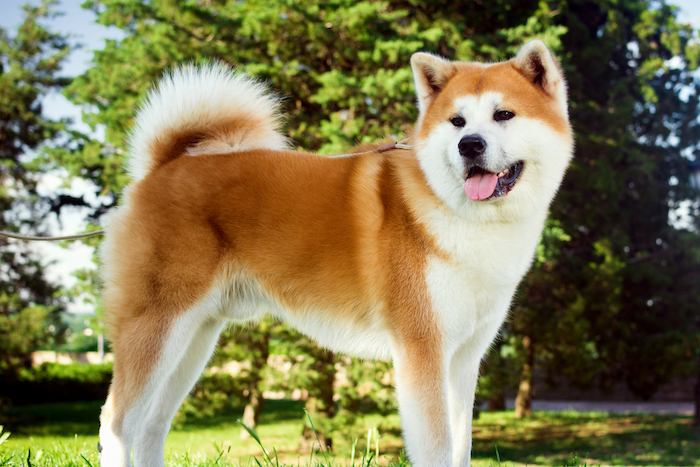
Healthy lifestyle for Akitas
Exercise
Bred for outdoor activity, specifically hunting in frigid Japanese forests, Akitas enjoy and require moderate exercise. Nothing extreme is necessary, but plan on a brisk walk or two per day, to total from a half to a whole hour. Hart says that Koji “loves the outdoors, especially during fall and winter.” The breed thrives in cool weather; on the flip side, with their thick coat, Akitas wilt in high temperatures, so plan to exercise early and late on summer days, and otherwise retreat to the AC. And don’t shave an Akita’s coat when it gets warmer—that fur helps regulate their temperature in both cold and hot conditions and protects them from infections, irritations, and sunburns.
Though many happy Akitas live in small homes, space and outdoor access are ideal. “They don’t do well in apartments,” says Jukes. “There’s no room for them.”
The Akita has a powerful prey drive, and the sight of a tiny animal can trigger one to give chase with little regard for their own safety, let alone the safety of who they’re chasing. Traffic is a serious hazard for a prey-driven dog on the loose. “You really have to be on guard with them outside,” Jukes says. Keep an outdoor Akita on a leash or in a fenced yard. “Our Koji is fast and powerful,” says Hart, “and I hate to think of what he would do to a squirrel or rabbit if he ever caught one.” An Akita might even hunt other animals in your household. “Okami never tried to actually eat the cat,” says Mullis, saying that her dog “knew the cat was family.” But “she still liked to chase and corner her.”
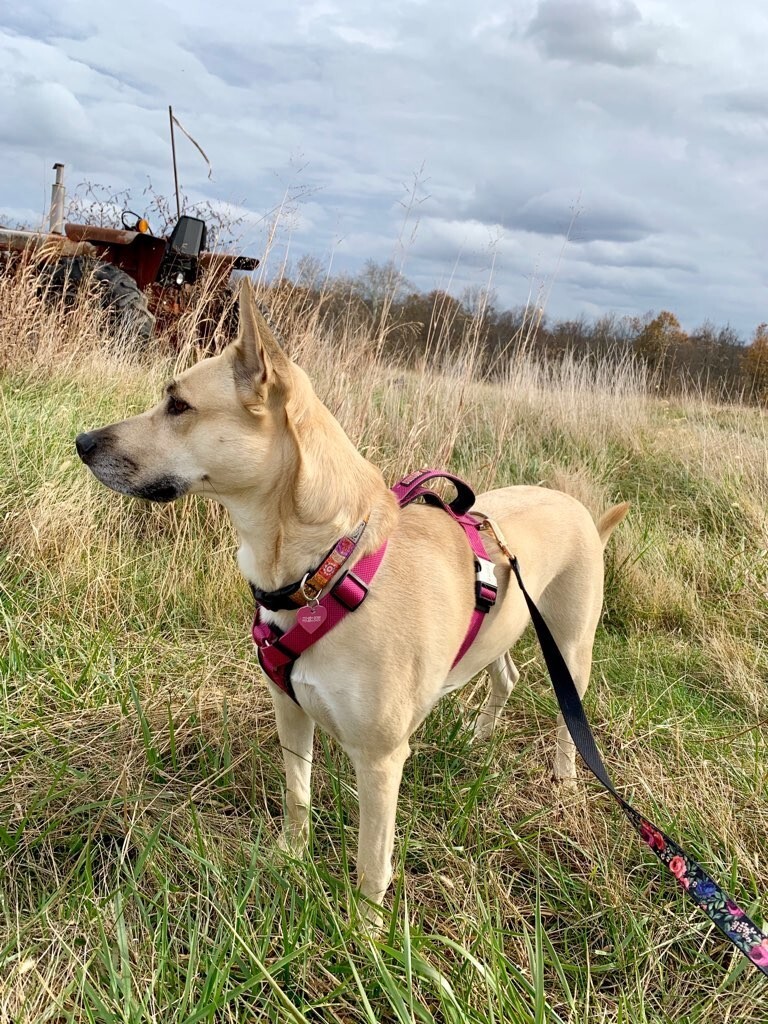
Evie, an Akita mix.
Grooming and bathing
Akitas have double coats and are copious shedders, especially twice a year when they “blow their coat” to mark the seasonal shift. At that time, “The dog’s coat looks like it’s been moth-eaten—and that’s normal,” says DeWees. During the year, daily brushing is advised to keep matting at bay. And, as noted above, shaving them is an absolute no-no. “They shed—a lot. Like, more than a lot. Constantly. Year-round,” says Windsberger. “But our love for Kacey overshadows our dislike of vacuuming every day.”
On the positive side, and in keeping with their feline nature, Akitas are fastidious groomers. They will often clean themselves like cats and wash their face and muzzle, and when outdoors they may avoid puddles and mud. Many refuse to go out in the rain, period, and getting them into the tub can be an ordeal. “Trying to give them a bath?” Jukes asks. “You might as well give Godzilla a bath.” Fortunately, their fastidiousness and their coat’s protective oils minimize the need for tub time. Three or four scrubbings a year should suffice.
Common Akita health problems
Akitas are generally a healthy breed, and those in good shape can live for 10 to 14 years. Like many other dogs, they may face arthritis, obesity, fleas and ticks, and gum disease—but Akitas are particularly susceptible to the following medical issues.
Hip dysplasia: Hip dysplasia is a serious condition that can cause pain, hinder a dog’s mobility, and lead to arthritis. It occurs when the hip joint’s ball-and-socket connection doesn’t fit together smoothly. Tell your vet if your Akita is newly struggling to walk or climb, which could indicate that the hip is difficult to move or is hurting. The condition is generally inherited—deal with only responsible breeders and rescue organizations—but injury may also be a factor. Treatment options include pain medication, nutritional supplements to support joint health, and hip-replacement surgery.
Hypothyroidism: When a dog has hypothyroidism, the thyroid gland doesn’t produce and release enough hormone. This condition is common in Akitas and many other breeds. Thyroid hormone regulates the body’s metabolism, so an Akita whose thyroid isn’t making enough may experience sluggishness, weight gain, hair loss, digestive issues, and other symptoms. Hypothyroidism is serious when undiagnosed. A vet will check your Akita for hypothyroidism by feeling the thyroid gland at the front of the neck, listening to their heart, and discussing any signs you may have noticed. Finally, blood tests will provide the definitive answer. The two most common causes of hypothyroidism in dogs are an autoimmune condition—in which the body attacks the gland—and idiopathic gland atrophy, “idiopathic” meaning basically that veterinarians are not sure why it happens. Very rarely, hypothyroidism can be caused by cancer.
There is no cure for hypothyroidism, but treatment options include hormone-replacement medicine and, if applicable, surgery to remove a tumor. With early treatment, Akitas with hypothyroidism can expect a long, quality life.
Bloat: Akitas are one of the breeds, along with Great Danes, standard poodles, German shepherds, and Irish setters, prone to bloat. Technically called gastric dilatation-volvulus, or GDV, it occurs when a dog’s stomach becomes distended with gas or, less commonly, food or liquid—often the result of eating too fast. The distended stomach then twists and further traps the gas and impairs blood flow, which is dangerous and painful. Left untreated, bloat can be fatal. Minutes can make a difference, so rush to the vet immediately if you suspect it. Signs of bloat include retching, a distended stomach, and a rapid or weak pulse—any of which a vet should examine immediately. Treatment options inserting a tube is orally into the stomach, which is flushed to remove trapped food and air. The next step is surgery to untwist the stomach and then peg it to prevent retwisting. Sometimes such surgery, called gastropexy, is done preventatively. Caught early, the prognosis for surviving bloat is excellent.
Sebaceous adenitis: Sebaceous glands rest in the skin of mammals alongside hair follicles, where they release an oily substance, sebum, that keeps the skin and hair in good condition. In some breeds, notably Akitas but also poodles and a few others, an autoimmune condition called sebaceous adenitis can cause inflammation of these glands. The result is patches of hair loss, brittle hair prone to breakage, resilient scaling on the skin, and lesions that are susceptible to infection. This is all unsightly, itchy, and painful, but not life-threatening. The vet will confirm diagnosis with a skin biopsy. Unfortunately, sebaceous adenitis in Akitas is resistant to treatment, though options include oral antibiotics and topical medications to calm inflammation.
Uveodermatologic syndrome: This rare genetic disease causes problems with dogs’ eyes, skin, and hair. It’s most dangerous to the eyes, and afflicted dogs can go blind. The disease is caused by a dog’s immune system attacking its own pigmentation cells. If you notice that your Akita’s eyes seem to hurt, have turned red or cloudy, or are blinking a lot—and if you see signs of vision changes, including your dog bumping into things when walking—get to a veterinarian as soon as possible for an examination.
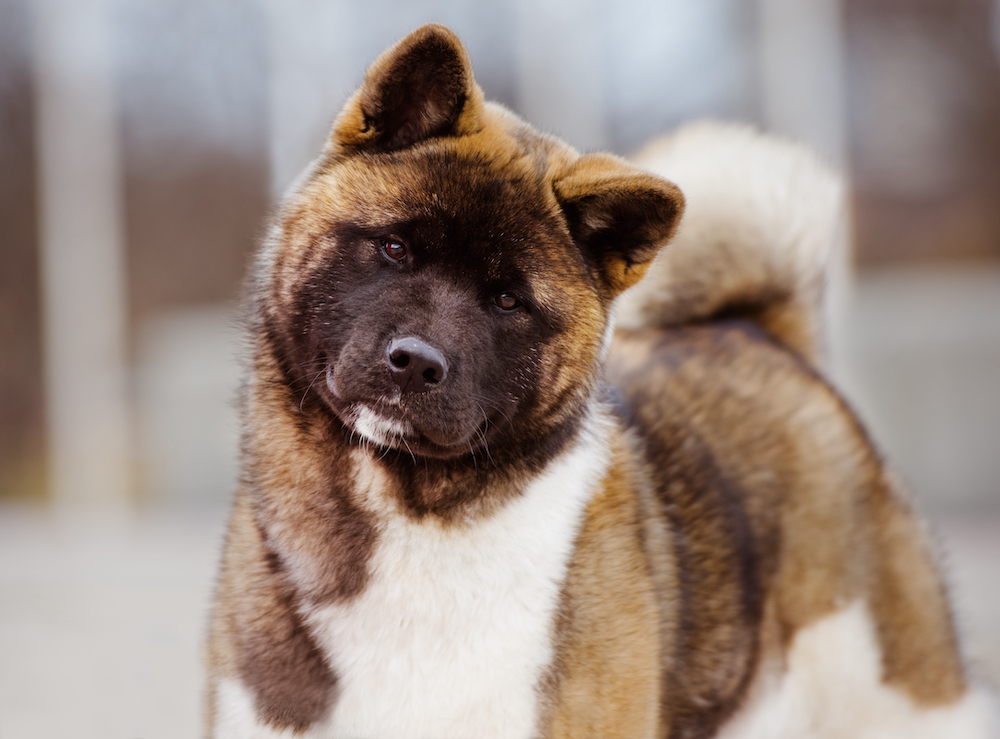
Food and nutrition for Akitas
Like all dogs, Akitas need digestible, complete, and balanced food that supplies enough energy for daily activities while helping maintain a healthy weight. Here is some food for thought.
Watch their weight: Extra weight puts additional stress on a dog’s heart, joints, and metabolism, so it’s important to control their portions and calorie intake while ensuring proper nutrition. Keeping your Akita in an ideal body condition can improve their chances of continued good health. A fresh-food plan makes it easy to feed the right amount of food for their age, size, and activity level.
Support heart and joint health: A fresh diet that provides balanced Omega-3 fatty acids may promote cardiac health and help ward off joint issues. A pre-portioned fresh food plan also makes it easy to feed the right number of calories every day. This helps maintain a healthy weight, which is another key factor in keeping heart and joints healthy, as well as improving general health and quality of life.
Mind the teeth: Eating for dental health means eating for overall health—a fresh, whole-food diet promotes a healthier immune system, which helps ward off dental maladies. Crunchy kibble is often said to clean teeth, but it does no such thing. In fact, kibble is an ultra-processed food and as such can contain substances that actually fuel inflammation in the body, including in the tissues of the mouth. Most kibble is starchy and full of fillers that break down to sugar, which contributes to plaque and bacteria.
High-quality food for high-quality poops: A diet of fresh, lightly cooked food has been shown to be more digestible than processed kibble, and can promote a healthy gut and good digestion (which also means better, smaller poops).
A healthy diet—alongside training, outdoor exercise, vet care, and time together—is among the keys to giving your Akita a happy life.
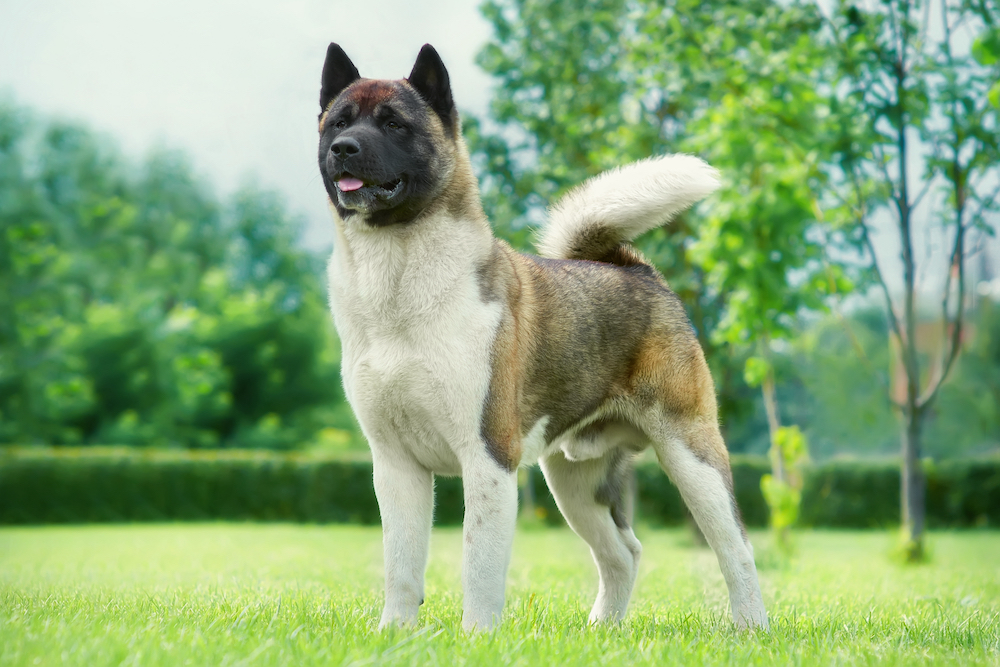
Where to get an Akita
If you are thinking of welcoming an Akita into your home, a great place to start is a rescue like Akita Rescue of Western New York, Akita Rescue of Northwestern Pennsylvania, Big East Akita Rescue, and Lone Star Akita Rescue. Don’t hesitate to ask them questions. As Northwestern Pennsylvania’s Jukes says, “You have to do research on the breed—research, research, research.”



